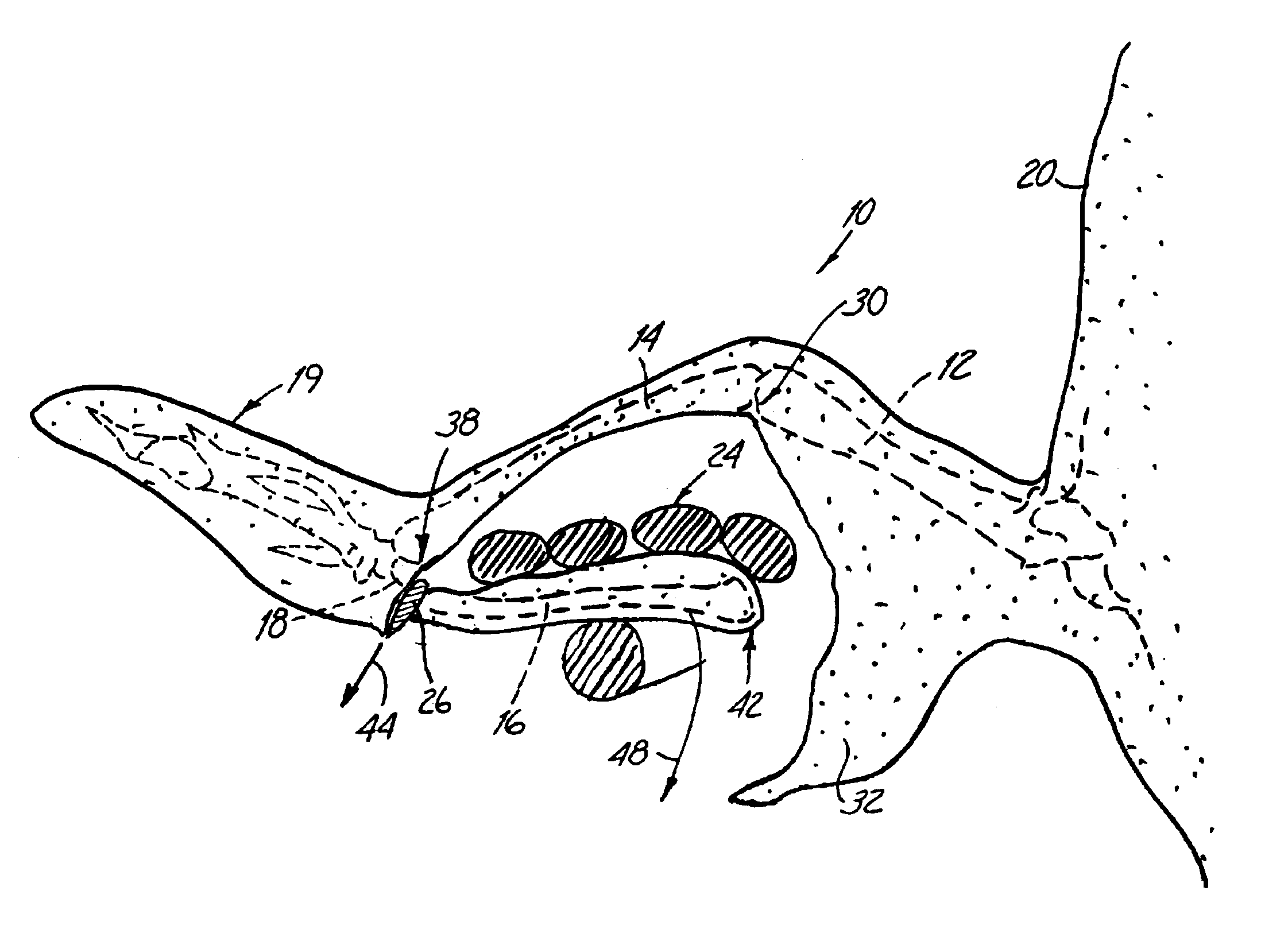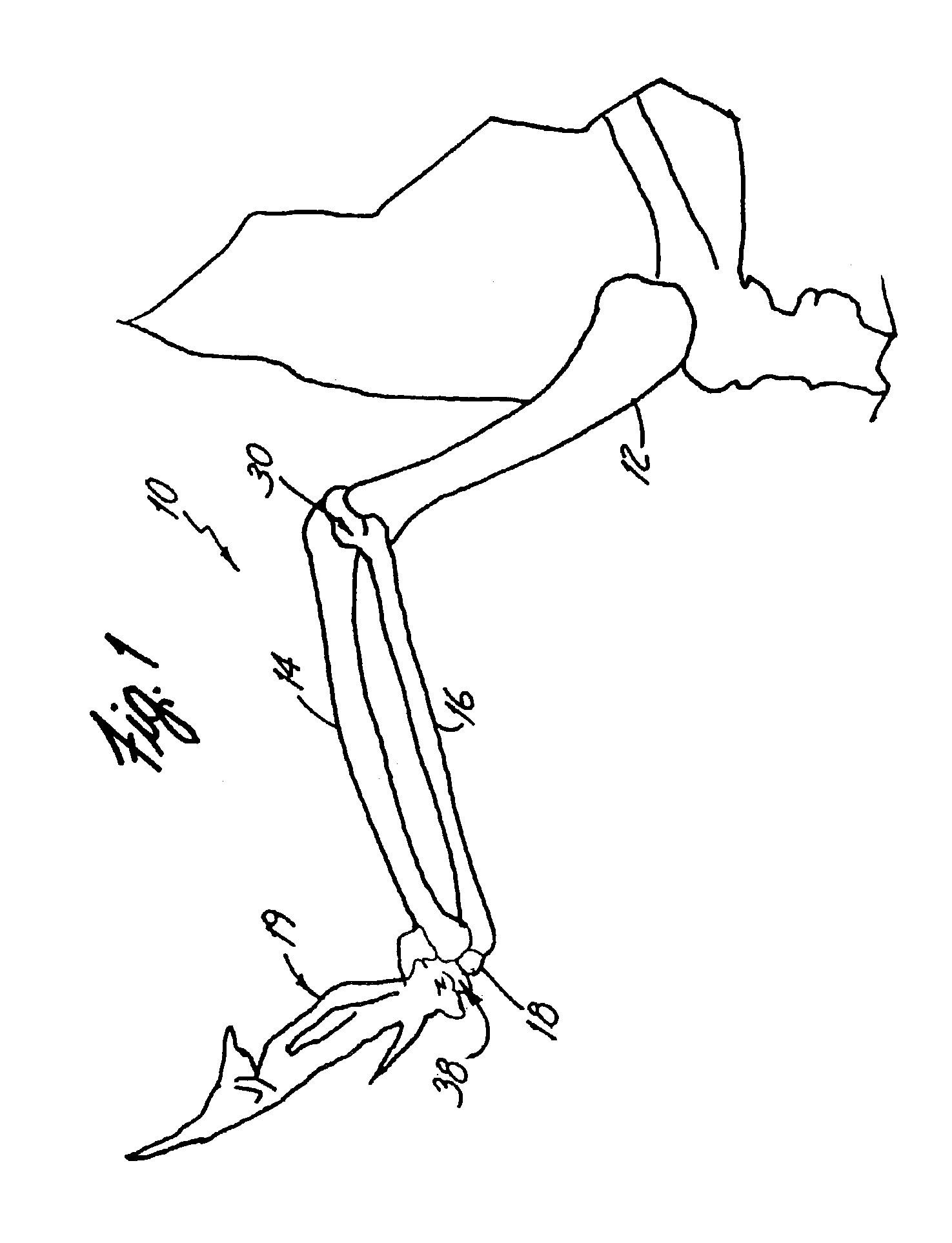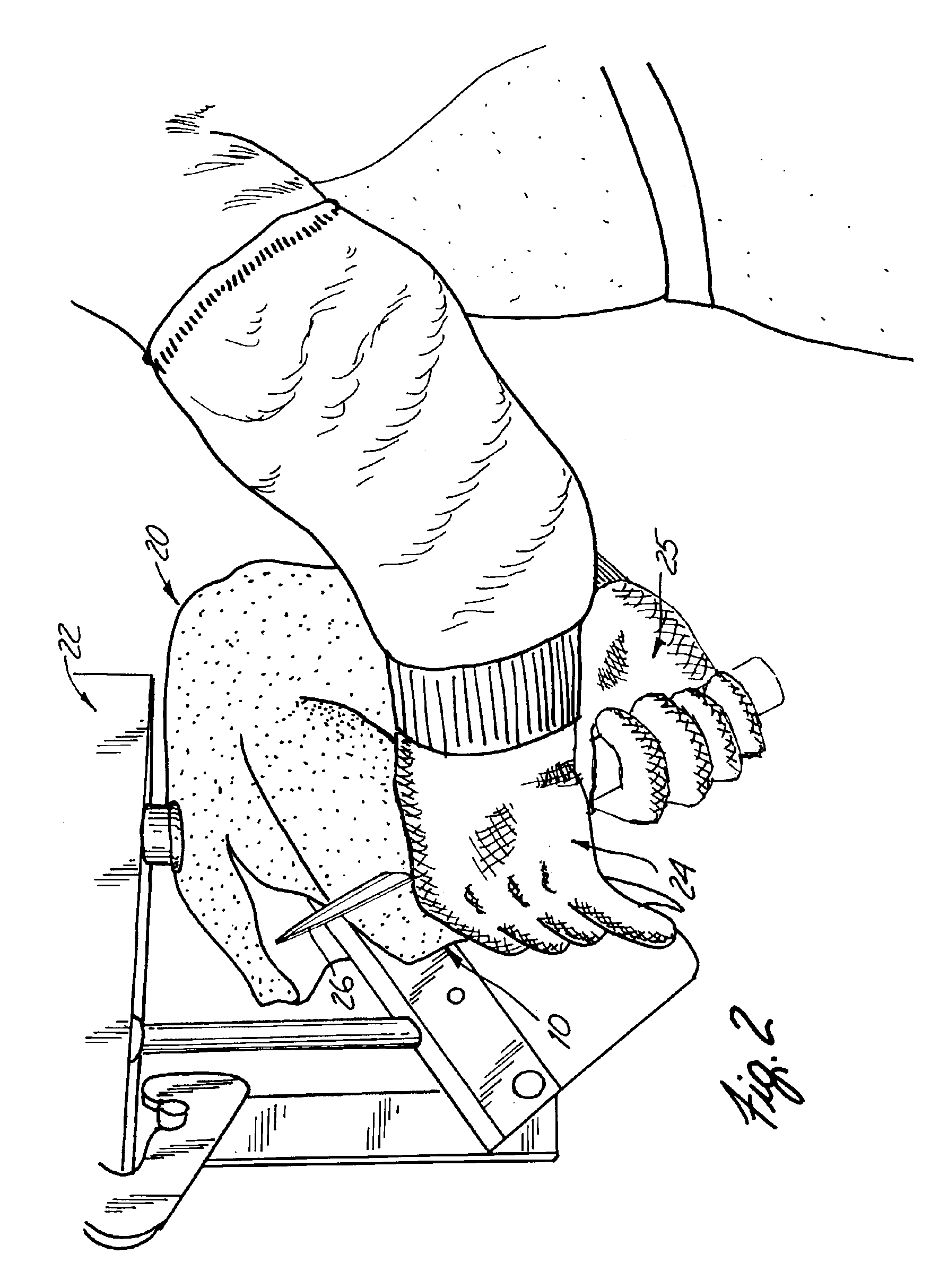Method for making a fowl wing cut and the resultant product
a technology for cutting and winglets, applied in the field of cutting fowl carcasses, can solve the problem of more difficult consumption of all available meat for a person
- Summary
- Abstract
- Description
- Claims
- Application Information
AI Technical Summary
Benefits of technology
Problems solved by technology
Method used
Image
Examples
Embodiment Construction
[0015]The present invention is a method for cutting a fowl carcass to create an edible fowl wing cut that includes the radius bone and muscles (meat) adhering to the radius bone. In butchered meats, the wing cut generally consists of both the ulna bone and radius bone as well as the associated muscles. However, the present invention discloses a method for cutting a fowl's wing to create a single boned edible wing cut.
[0016]In recent years, convenience and quality of presentation have become increasingly important to both consumers and food service distributors (e.g., restaurants). The present invention is directed to the preparation and service of an innovative meat product, one which provides a discrete and easy to handle meat product that has a high meat-to-bone ratio. Such a product is quite suitable as an appetizer on a restaurant menu and can provide high profit margins for food service distributors, while also providing a high quality and meat-heavy product for the consumer (i...
PUM
 Login to View More
Login to View More Abstract
Description
Claims
Application Information
 Login to View More
Login to View More - R&D
- Intellectual Property
- Life Sciences
- Materials
- Tech Scout
- Unparalleled Data Quality
- Higher Quality Content
- 60% Fewer Hallucinations
Browse by: Latest US Patents, China's latest patents, Technical Efficacy Thesaurus, Application Domain, Technology Topic, Popular Technical Reports.
© 2025 PatSnap. All rights reserved.Legal|Privacy policy|Modern Slavery Act Transparency Statement|Sitemap|About US| Contact US: help@patsnap.com



